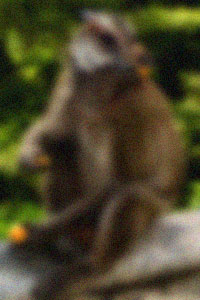
What is a yuba?
The yuba is a small mammal (yubaes minimus) that was at one time quite abundant, but today is nearing extinction. Long ago there were almost a dozen varieties of the yuba, however today the only surviving one is the Mountain Yuba. The names Yuba City and Yuba County (California) both contain the name of the yuba, and some say that they were named after the yuba. To avoid confusion, it is interesting to note that Yuba City is in Sutter County, but Marysville is in Yuba County. And while there also is a lake and a Yuba State Park in Utah, no evidence has been found that yubas ever inhabited that area. In fact yubas have not been found anywhere else on earth. When asked if a yuba had ever been spotted in Australia, one observer said: "Personally, no, I have not seen any, is there any chance they are related to drop-bears?"
What has caused the near-extinction of the yuba?
Our planet is continually changing, causing habitats to be altered and modified. Natural changes tend to occur at a gradual pace, but when changes occur at a fast pace, there is little or no time for individual species to react and adjust to new circumstances. This can create disastrous results, and for this reason, rapid habitat loss is the primary cause of species endangerment. The strongest forces in rapid habitat loss are human beings. Nearly every region of the earth has been affected by human activity, particularly during the past century. The extinction of fish and various aquatic species in polluted habitats and changes in global climate brought about by the release of greenhouse gases are all results of human activity.

Disease, pollution, and limited distribution are more factors that threaten the existence of the yuba. If a species does not have the natural genetic protection against particular pathogens, an introduced disease can have severe effects on that specie. Domestic animals often transmit the diseases that affect wild populations, demonstrating again how human activities lie at the root of most causes of endangerment. Pollution has seriously affected multiple terrestrial and aquatic species, and limited distributions are frequently a consequence of other threats; populations confined to few small areas due to of habitat loss, for example, may be disastrously affected by random factors.
 Shown here is the only picture known to exist of a yuba, captured by a group of hiking Boy
Scouts in 1969. It is believed to be the black-footed yuba. As far as we know, there is no picture of the
long-tailed yuba, and since this animal has not been seen in over 10 years, it is feared that this variety has
already become extinct (The black-footed and the long-tailed are the only sub-species of mountain yuba). Read
about What you can do to help save the yubas.
Shown here is the only picture known to exist of a yuba, captured by a group of hiking Boy
Scouts in 1969. It is believed to be the black-footed yuba. As far as we know, there is no picture of the
long-tailed yuba, and since this animal has not been seen in over 10 years, it is feared that this variety has
already become extinct (The black-footed and the long-tailed are the only sub-species of mountain yuba). Read
about What you can do to help save the yubas.
The Sutter Buttes
In the midst of the Sacramento Valley lies an isolated cluster of small mountain peaks. Officially named in 1949, this mountain range is circular, with a diameter of 10 miles and covers about 75 square miles. With the highest peak at just 2,117 feet above sea level, the Buttes are the perfect home for the yuba. Sometimes called The World's Smallest Mountain Range, these mountains are the remnants of a dormant volcano. The Buttes are mostly private property, but in 2003 the state of California acquired approximately 1,785 acres on the north side with the purpose of creating a State Park. At the present time, the name of the park has not been determined and it is not yet open to the public.
This range is close to the city and county of Yuba, and in the wintertime yubas travel to these areas to find food, in particular the berries of the eucalyptus tree.
